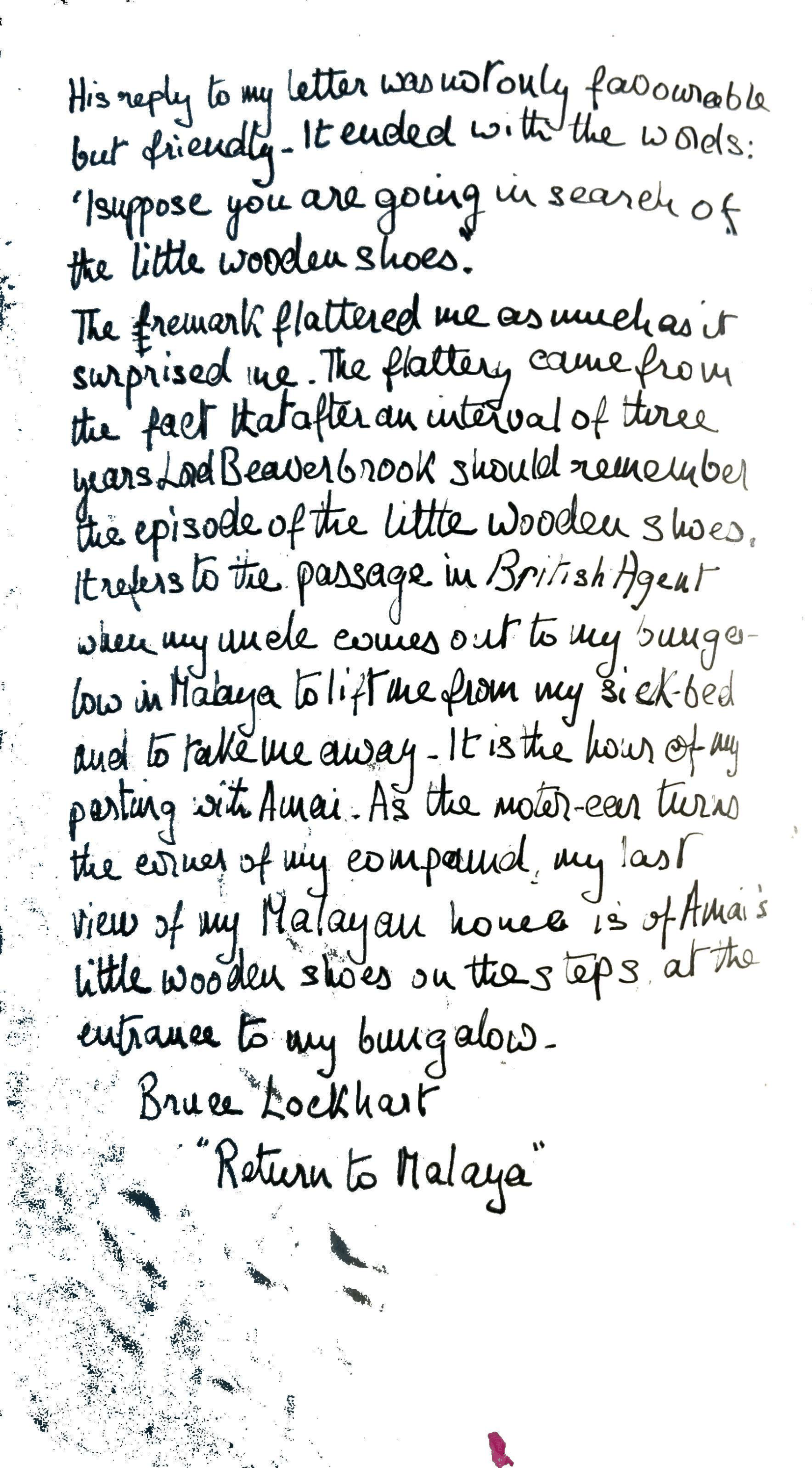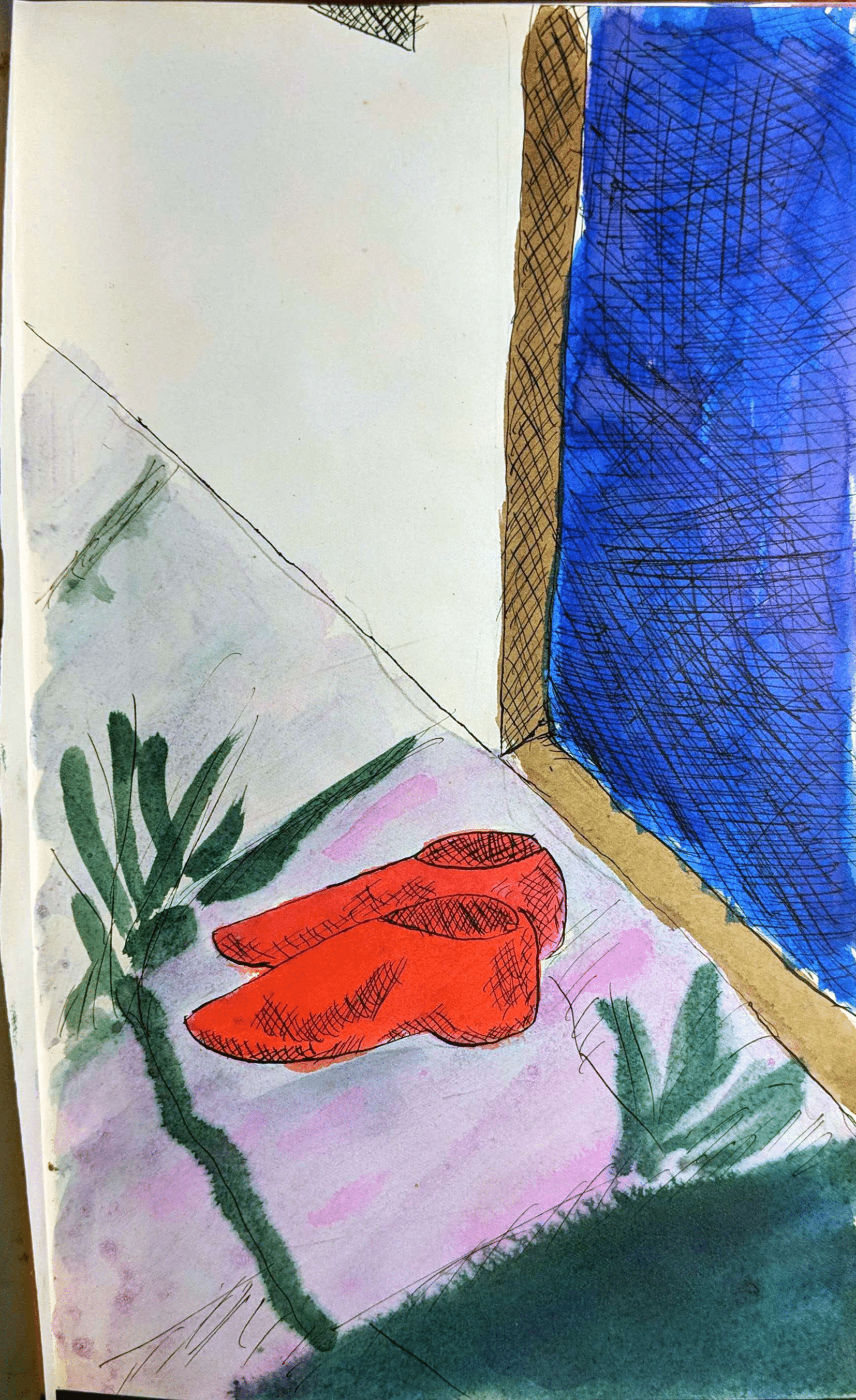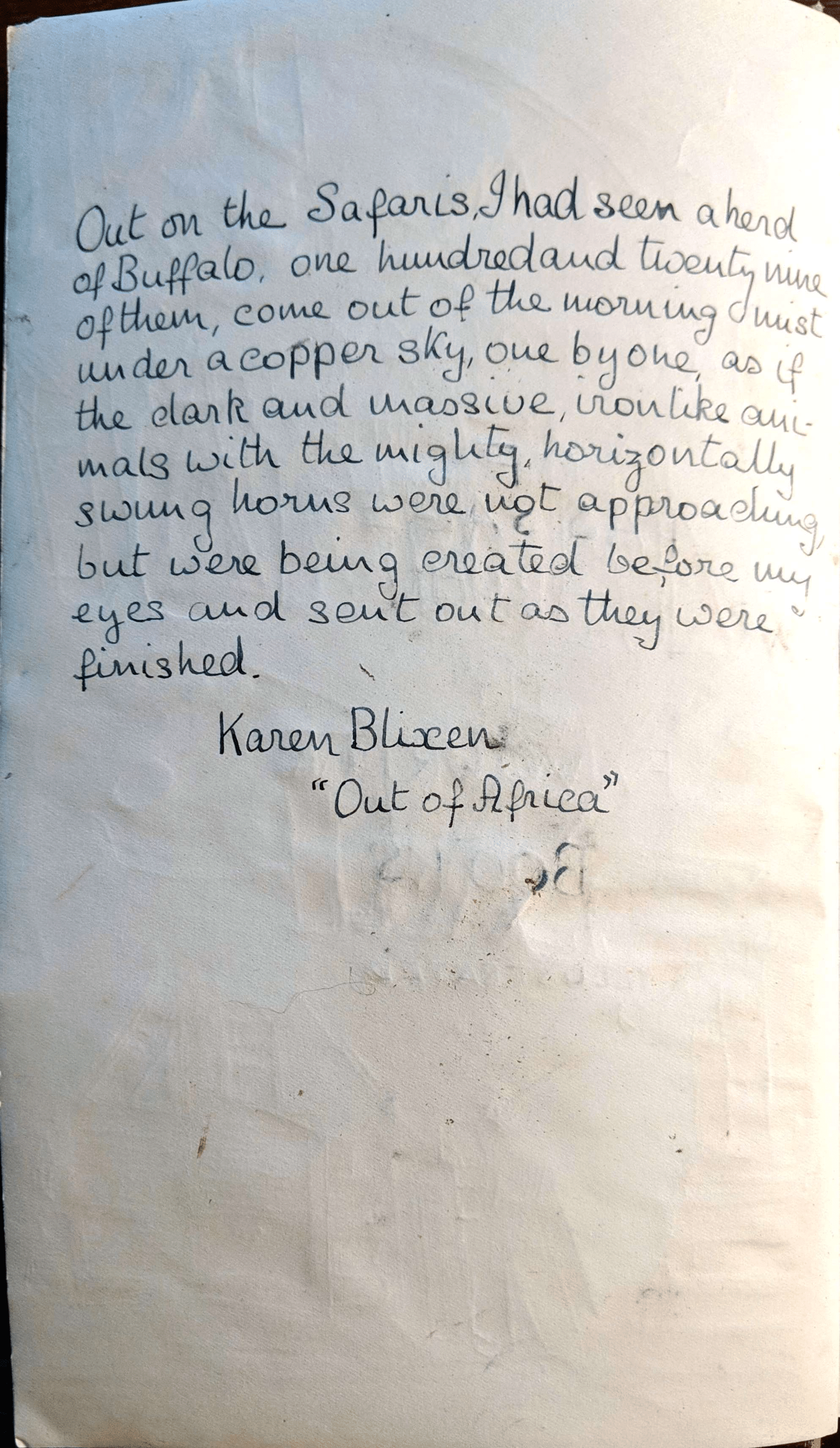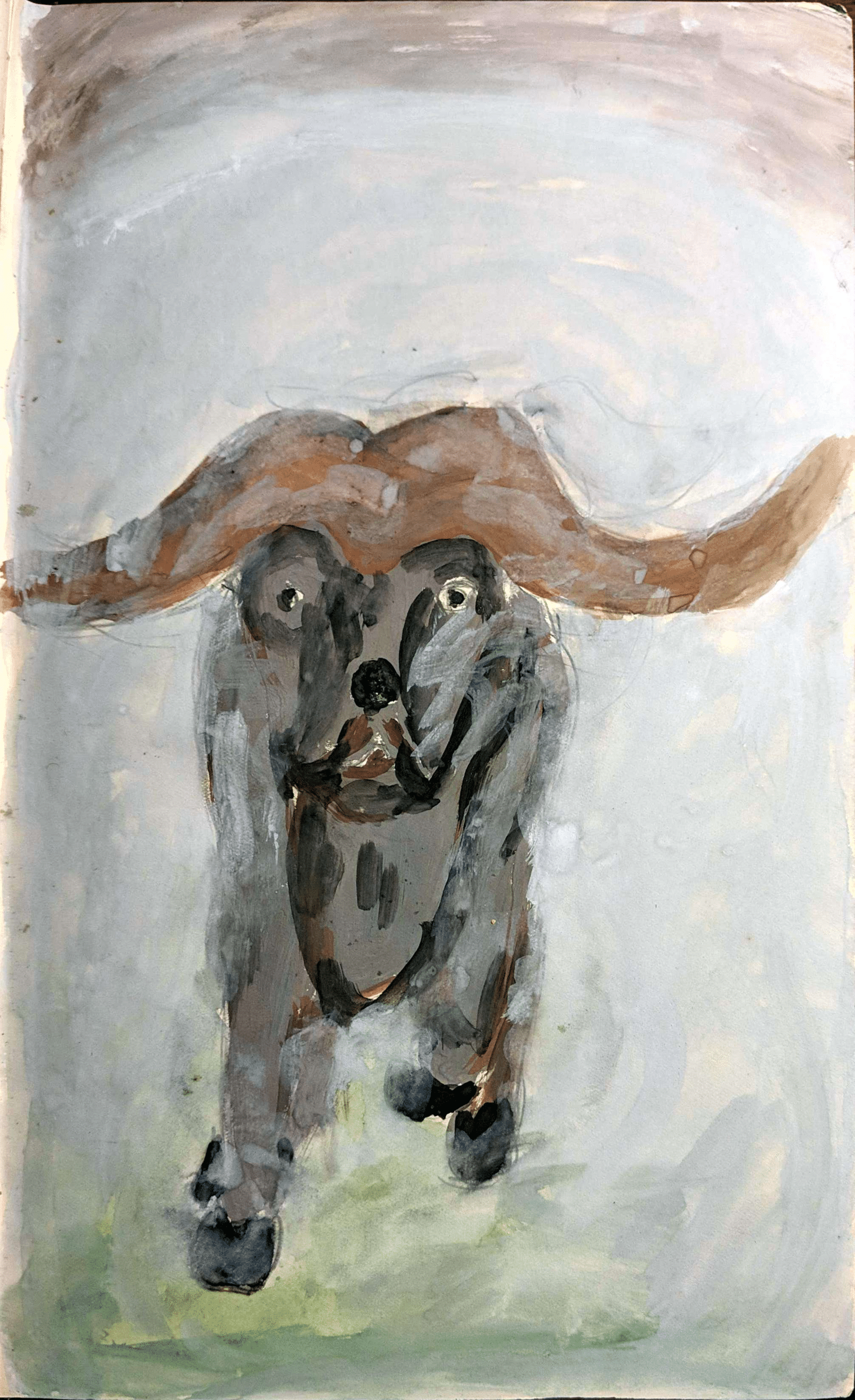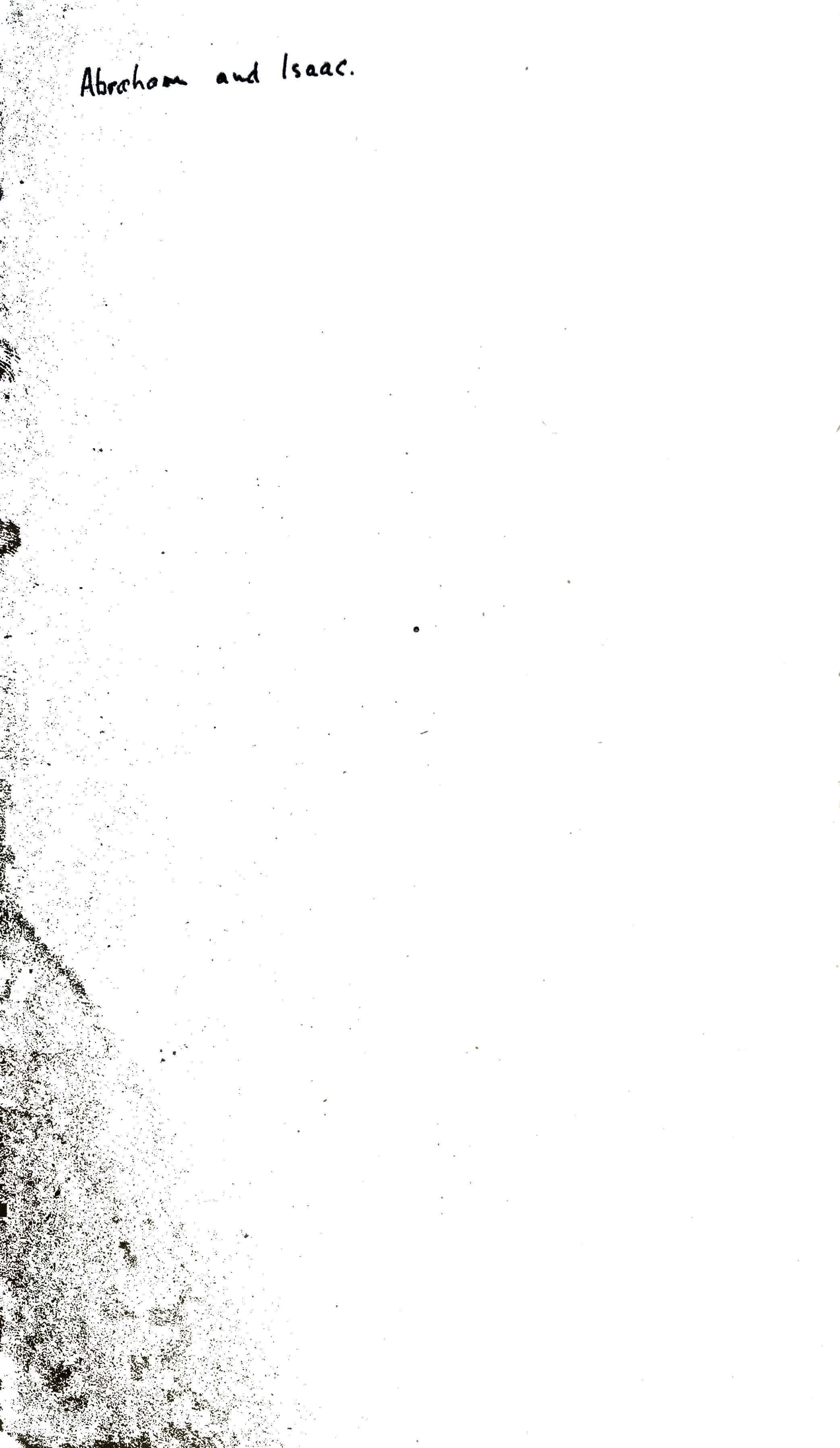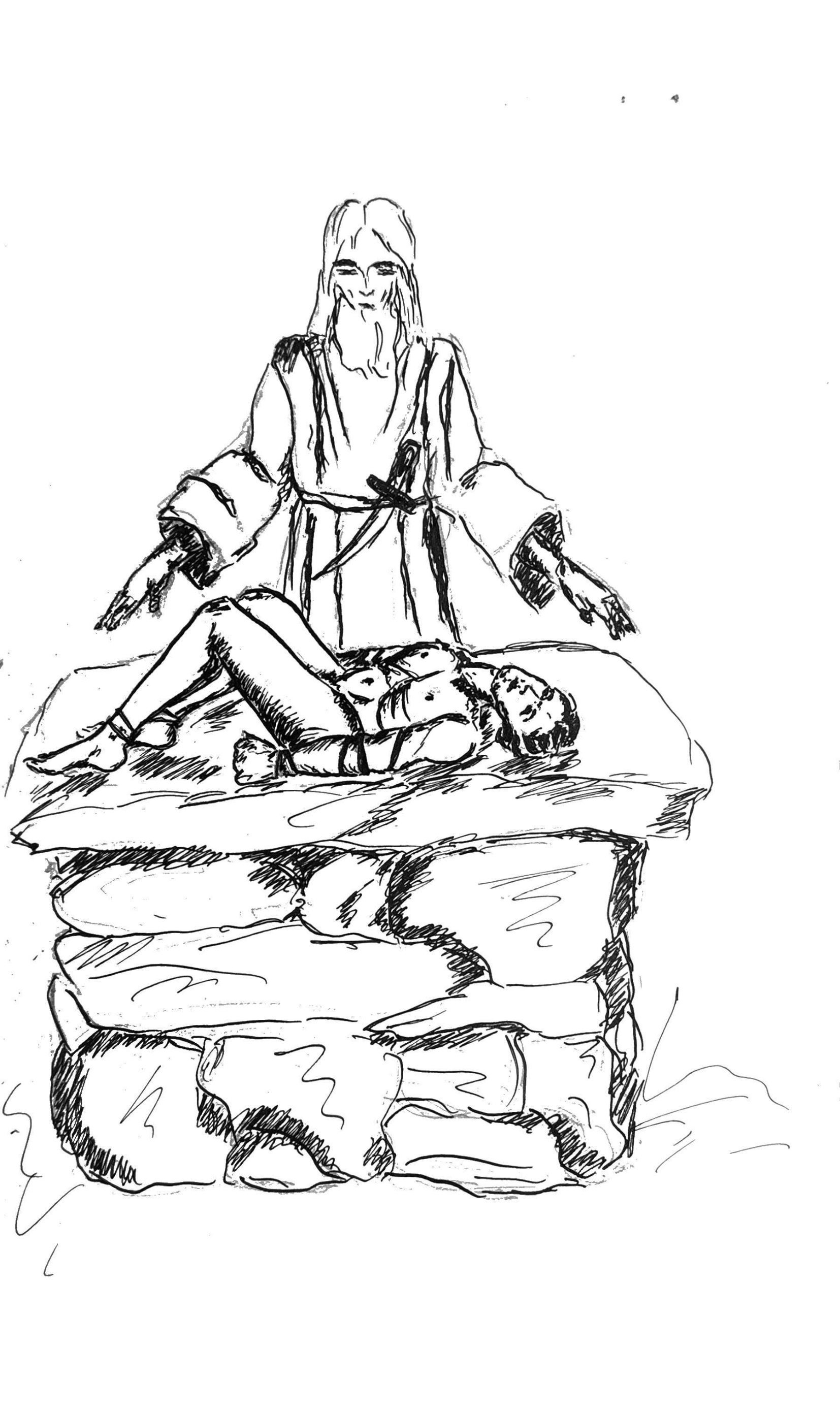Alfreda the Artist
As a young girl, Alfreda Huntington demonstrated remarkable artistic ability. In one of the boxes generously donated by Katherine Urquhart Ohno, we found Alfreda’s Anthology of Passages from my Favourite Books, which started life as blank books and was filled over time with color and memories.
Look at all the filled pages of the book here:
For each passage from one of her favorite books that she chose to highlight, Alfreda would draw, and often paint, an accompanying illustration.
Some of Alfreda’s favorite books, as listed in this book, were Return to Malaya (1936)—as mentioned above, Karen Blixen - Out of Africa (1937), Apsley Cherry-Garrard - The Worst Journey in the World (1922), Thomas Hardy - Tess of the D’Urbervilles (1891), Dostoevsky - The Idiot (1868), and Thomas Hardy - The Return of the Native (1878).
A selection from Out of Africa is the first one in the book. As the entries in the book appear to have been done in order, although the book is not dated, we can assume Alfreda began it in 1937 or later—age 15 or so.
Toward the end of the book, both the quotes and drawings became less complex—we don’t know why, nor do we know for how long she kept the book.
Further Reading on Commonplace Books
Locke, John. A new method of making common-place-books. London : Printed for J. Greenwood, bookseller, at the end of Cornhil, next Stocks-Market, 1706. *EC65 L7934 706n. Houghton Library, Harvard University, Cambridge, Mass.
Sánchez-Eppler, Karen. “Practicing for Print: The Hale Children’s Manuscript Libraries.” Journal of the History of Childhood and Youth 1, no. 2 (2008): 188-209.
Zboray, Ronald J., and Mary Saracino Zboray. “Is It a Diary, Commonplace Book, Scrapbook, or Whatchamacallit? Six Years of Exploration in New England’s Manuscript Archives.” Libraries & the Cultural Record 44, no. 1 (2009): 102–23.


